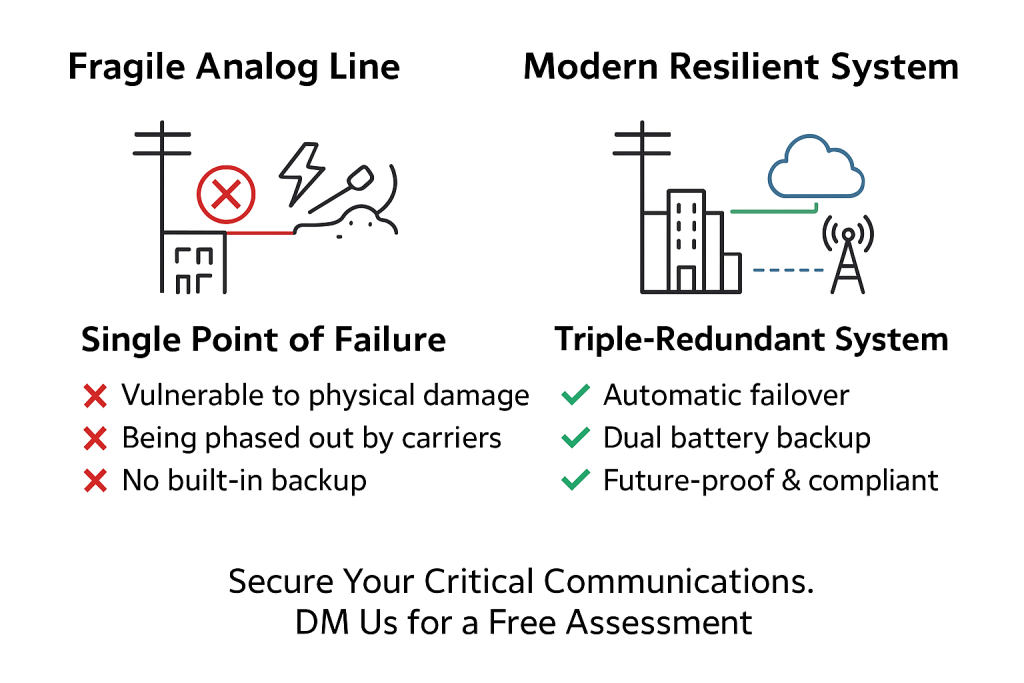
For decades, traditional analog telephone lines—better known as landlines—have been the backbone of critical services like fire alarm panels, elevator emergency phones, building security systems, and other life-safety communications. They offered a simple, point-to-point connection that worked reliably in their time. But as the telecommunications landscape evolves, the weaknesses of copper-based landlines are becoming harder to ignore.
The Limitations of Analog Landlines
While once considered the “gold standard,” landlines are increasingly fragile in today’s world:
-
Single Point of Failure: Copper lines are limited to a physical path. A backhoe digging in the wrong spot, a severe storm, or accidental damage can cut service instantly.
-
Carrier Infrastructure Decline: Phone companies are decommissioning legacy equipment, leaving fewer resources to maintain reliability. Customers are left relying on aging gear between their premises and the central office.
-
Cost and Availability: In many regions, landlines are becoming more expensive while simultaneously being harder to order as carriers phase them out.
When it comes to life-safety systems—where uptime isn’t optional—these risks are unacceptable.
Modern Replacement Solutions
Today’s replacement devices are designed specifically to meet regulatory requirements (NFPA, AHJ, and other compliance standards) while dramatically improving uptime and resilience. A best-in-class solution includes:
-
Dual Battery Backup: Providing hours of protection in the event of a power outage, ensuring alarms and emergency calls still go through.
-
Primary Internet Connectivity: Using Ethernet/IP as the main transport path, offering speed, reliability, and leveraging existing broadband infrastructure.
-
Dual Cellular Failover (AT&T and Verizon): If the wired Internet fails, the system automatically routes calls through redundant LTE networks, ensuring the connection works even if one carrier experiences downtime.
The Benefits Over Legacy Landlines
-
Higher Uptime: Instead of relying on a single copper path, systems now have three layers of redundancy—Internet, AT&T LTE, and Verizon LTE.
-
Regulatory Compliance: Designed to meet or exceed fire marshal and elevator code requirements.
-
Future-Proofing: Carriers are retiring copper networks. Transitioning now avoids the scramble when the last landline is finally disconnected.
-
Cost Efficiency: One replacement device can support multiple lines, often at a lower monthly cost than maintaining legacy landline service.
Critical Applications That Benefit
-
Fire Alarm Panels
-
Elevator Emergency Phones
-
Security Systems
-
Medical Alert Devices
-
Gate and Access Control Systems
Each of these services must function without fail, and replacing old copper lines with modern, redundant communication devices ensures they will.
Conclusion
The days of depending on analog landlines are numbered. For critical systems where lives and property are at stake, it’s time to migrate to modern replacement solutions that deliver higher reliability, compliance, and resilience. With dual battery backup, Internet connectivity, and dual-carrier failover, building owners and facility managers can be confident that their critical communications will work when needed most.

